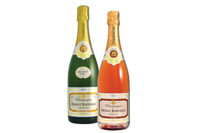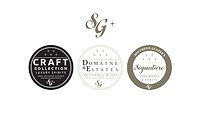Outlook positive for wine and spirits


|
With the wine and spirits industries continuing to showcase positive numbers, those in the industry maintain a positive outlook for the categories.
The Distilled Spirits Council of the United States (DISCUS), Washington, D.C., released its 2010 Industry Review report in January that stated that spirits revenue was up 2.3 percent to $19.1 billion. The super-premium spirits category grew 10.9 percent in 2010 compared to a soft 2009, it says. The council also states that spirits gained just less than half a percent rising to 33.3 percent of the beverage alcohol market.
Vodka, which makes up 31 percent of the spirits volume, was up 6.1 percent to 59 million 9-liter cases and the segment’s super-premium category saw volume increase to nearly 18 percent and revenue grow approximately
14 percent, DISCUS says.
A continued trend in the vodka category was flavored varieties. The flavored vodka market accounted for more than $412.4 million of the vodka category, a 15.7 percent increase, for the 52 weeks ending Dec. 11, 2010, in U.S. supermarkets, drug stores, gas and convenience stores, liquor stores and other select channels, according to The Nielsen Co., Schaumburg, Ill.
For whiskey, revenues increased 29 percent to $5.6 billion, according to the DISCUS report. Bourbon and Tennessee Whiskey were up 2.5 percent overall and 16.2 percent in the super-premium segment, while Irish Whiskey was up 21.5 percent overall, the council says. Single Malt Scotch was up 11.7 percent and blended scotch was down 1.4 percent, according to the report.
The rum segment saw case sales increase 1.4 percent to 24.9 million cases, although revenues were down 0.9 percent to $2.2 billion, DISCUS reports.
Tequila also saw volume increase with 3.6 percent growth to 11.6 million cases.
Value priced wines helped contribute to growth in the wine category. Sales of table wine increased 5.5 percent to $6.3 billion, according to SymphonyIRI Group, Chicago, for the 52 weeks ending May 15 in U.S. supermarkets, drug stores, gas and convenience stores and mass merchandise outlets, excluding Wal-Mart.
No. 1 selling wine, Barefoot, posted a 29.2 percent increase in sales for more than $315.9 million. The brand also had a 30.2 percent increase in volume sales.
Domestic table wine sales were up 5.8 percent for more than $6.6 billion in sales in measured channels for the 52 weeks ending Dec. 11, 2010, according to The Nielsen Co. Domestic case sales increased 4.2 percent, during the same time period. Imported table wines remained flat for 2010.
Pinot Noir sales were up 9.9 percent followed by Riesling at 9.8 percent; Sauvignon Blanc with 9 percent; Cabernet Sauvignon and Sangiovese at 6 percent; Zinfandel at 5.6 percent; Pinot Grigio at 5.4; and Chardonnay at 2.3 percent, according to The Nielsen Co. as of Dec. 11, 2010.
The Wine Institute, San Francisco, released the “The London International Wine Fair White Paper: The U.S. Wine Revolution” as part of the Wine Intelligence Global Conversations seminar program in May, which forecasts that by 2020, the monthly wine-drinking population in the United States will rise from its current level of 36 percent of American adults to between 40 and 45 percent.
The number of those who drink wine more than once a week is predicted to increase to 50 percent (equivalent to 50 million drinkers) in 2020, the white paper states. BI
Looking for a reprint of this article?
From high-res PDFs to custom plaques, order your copy today!






